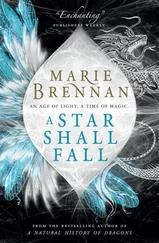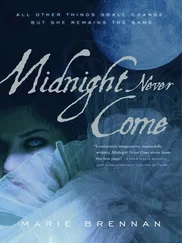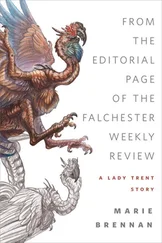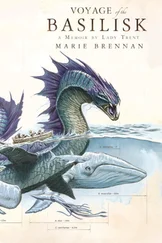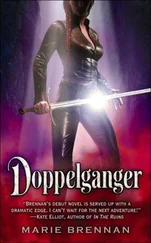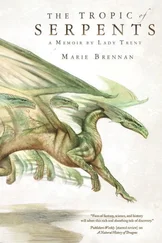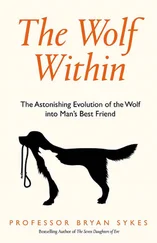“There!”
It was a tiny thing, an aberration in the smooth expanse of snow. Near to a small shoulder of Gyaptse on the north end of the col, it protruded only about fifteen or twenty centimeters; had the snow been any deeper or the winds here less fierce, we would have missed it entirely, for the monsoon had gone a long way toward burying it. But that tiny thing was enough, and we set off for it with new life in our limbs.
Suhail dragged us to a halt a few meters away, quite literally grabbing our sleeves to stop us. “Wait. Wait!”
There was nothing in the world I wanted less to do. Sun-dazzled though my eyes were, I could see enough to make my breath race even more than it already did. A pale, pebbled surface very similar to the scales Thu had shown us. A flattened lump I thought might have been a brow ridge, before the bone beneath gave way and collapsed the flesh. We had at least part of a specimen, and the rest… the rest might lie just a little distance under the snow.
But if Tom and I were here for our expertise with dragons, and Thu and Chendley for their expertise with mountains, Suhail was here as our archaeologist, to make certain we did not damage what we had come so far to find.
As he had done when we discovered the Watchers’ Heart, he made us proceed with care. While we hovered and twitched, he circled the visible remains at a safe distance, considering their disposition. Finally he said, “If the rest of the body is still attached, it most likely lies here.” One hand indicated an area of snow. “But without the skeleton, we can’t really be sure. It might have twisted in any direction.”
The only way to know for sure was to dig.
We began at the head—or rather I should say Suhail began, for he did not want more than a single person’s weight atop the snow there, in case it crushed something delicate. He brushed away the looser snow with his gloved fingers, exposing enough to reveal that we were indeed looking at the flattened head of some draconic creature. Then, with careful taps of a small pick, he began to chip away the older encrustation.
While he did this, the rest of us brushed the ground in a circle around the head, scooping away the snow. Ordinarily I would have stood back and drawn the scene, but not on this occasion, for two reasons: first, that my heavily gloved hand could not wield a pencil with any accuracy, and second, that I could not have stood back for any sum of money. I took the southern quadrant, where Suhail thought the rest of the carcass was most likely to lie; Thu was to my left and Tom to my right.
I did not have to dig far at all before it began. “I found something!” I exclaimed. Only a sharp order from Suhail kept Tom and Thu from hovering over me. But they turned their efforts toward mine, and we went on digging.
One centimeter at a time, it emerged. At Suhail’s end, the collapsed head; at mine, a misshapen lump it took me a long time to be certain was a foot. Rather than chipping too far downward, I went horizontally, following the line of the leg. Hindleg, or fore? I kept changing my mind; we had not uncovered enough to be certain. Fore, I thought, based on the distance from the head, and the relative sizes—but then I reached something that did not look like a shoulder. And Tom, lying full-length to distribute his weight and digging between myself and Suhail, stopped without warning.
“Isabella,” he said. “Look.”
In science it is often possible to examine the bark so closely, one forgets the subject at hand is a tree, much less that it exists as part of a forest. I sat up, my back aching, and I looked.
At Suhail’s knees, the head. At mine, the leg, twisted and flat, leading to a structure that was not a shoulder. And where Tom dug, another limb—smaller than the one I had uncovered, equally twisted and flat, but leading to a structure that most definitely was a shoulder.
From foot to head, the entire thing was not more than two and a half meters. And it was bipedal.
We stared at it in frozen silence, while the wind howled around us. Imagine it alive, with a skeleton inside; imagine it standing, with one foot outstretched and the shoulders thrown back proud. We had seen that image a thousand times, in statues, carved into walls.
It was a Draconean god.
A race against time—Gyaptse’s wrath—Out of my grave
What does one do, when one finds a mythical creature buried in the snow of the Mrtyahaima?
One keeps digging, of course.
We could not spare the time to discuss its implications. We were too exhausted, and there was no good place to set our tents on the Gyaptse side of the col; if we were to return to our previous campsite, we could not stay where we were for long. But all of us shared the fear that if we left the specimen where it was, exposed by our efforts, it would be destroyed or lost to the valley below, as the previous one had been. We must free it from the ice now, and carry it with us. That this would likely damage it, we must accept as preferable to the alternatives.
Further excavation only confirmed that we were not hallucinating on account of altitude. The carcass was that of a bipedal, dragon-headed creature, with a head large in proportion to its body, as a human’s is. The first wing we uncovered was too poorly preserved for us to make any judgments; could it bear the body’s weight? How would a creature such as this fly, when it was built to walk upright? With the muscles so withered by cold and desiccation, we could only guess at its living mass, its sex, whether it was a juvenile or an adult.
It was a race against time. We had barely set our hands to the task once more when Chendley, keeping a worried eye on the sky, said, “The weather’s changing.”
In the Mrtyahaima, storms can blow in with shocking speed and very little warning. I soon took off my darkened goggles, for the sunlight had vanished behind a fresh layer of clouds. The wind picked up as we located the second wing, renewing the stinging onslaught of ice. And, worst of all, more snow began to fall.
I cursed steadily under my breath as I worked. It was too unfair—finding something so astonishing, only to have the sky itself turn against us. This was no mere fouling of the weather, but a genuine storm, and every minute we stayed there endangered us further. One entire side of the carcass was still buried in ice when Suhail left off and hauled me to my feet. “No!” I shouted, struggling against him. “We can’t leave it—we can’t go back—no one will believe us if we don’t have proof!” My scientific reputation was not powerful enough to support such a claim. They would think I was clawing for more attention, making up stories to inflate my notoriety. No one would believe that we had found a dragon-headed biped, not unless we could silence the doubters with a carcass.
But Tom was at my other side, helping Suhail drag me away. I knew they were right; I knew staying there would be suicide. And yet I fought them, even as we stumbled back across the col toward safety.
Then Gyaptse itself turned against me. “ Avalanche! ” Chendley bellowed, and the thunder began.
* * *
Had we still been roped together, as we had been during the climb, all five of us would have died. The rope itself would have broken our bones, yanked us this way and that, dragged us down into the torrent when we needed to swim for the surface.
Surviving an avalanche is a good deal like swimming—in violent, solid water. The snow overtook us before we got very far at all, but in the interim, we all charged to our right, desperate to get away from the cliff that dropped into the valley where Thu found the first carcass. If we went over that edge, we were dead. I ran with Suhail’s hand gripped in my own, both of us stumbling in the deep snow and alternately helping one another to our feet—and then the hammer of God struck us from behind.
Читать дальше


